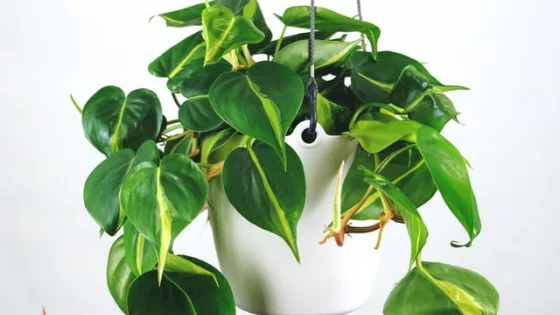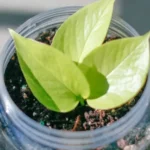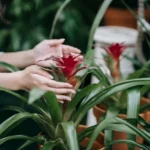Table of Contents
Caring for Philodendron Brasil
Philodendron Brasil, also known as variegated heartleaf philodendron, is named after the colors produced by its natural variegation, a combination that resembles the green and yellow parts of the Brazilian flag.
The Philodendron Brasil is popular for the contrasting olive green and rich yellow colors on its leaves.
Philodendrons are typically fairly easy houseplants to keep alive, and Philodendron Brasil is no exception.
As with many plants, the vibrancy of colors and overall happiness of the plant do take a little more effort, but they’re still pretty easy to work with!
Helping Philodendron Brasil Thrive
Helping Philodendron Brasil thrive isn’t terribly difficult. It likes warmth and humidity but dislikes being in soil that stays too wet.
When presented with the right conditions, its leaves will be bigger, and its variegation will be more pronounced.
As with most plants, it’s good to keep an eye out for yellowing leaves, since that’s a sign of overwatering.
Though some yellow coloring is a desired state for the Philodendron Brasil, there’s a big difference between a healthy yellow leaf and one that looks washed out and faded to yellow.
You’ll also want to keep watch for browning or curled leaves, as well as any evidence of the stem turning black.
None of these should be common, but they’re indicators that something in the Philodendron’s environment might need to be adjusted.
Light Requirements
Philodendron Brasil appreciates bright, indirect light, but it can still thrive in moderate lighting conditions.
It tolerates lower light, but it tends to lose its variegation, the leaves settling into more of a solid green.
If kept in sunlight that is too hot and direct, the leaves may scorch, turning brown, drying out, or curling under to get away from the light.
In cooler climates or times of year without much direct light, it might be okay to keep a Philodendron Brasil very near a window, but as a general rule, it’s best to keep it where it only gets indirect or diffuse light.
Temperature Requirements
The Philodendron Brasil likes temperatures very similar to the average household’s, though it also appreciates it a little warmer.
Ideal temperatures for this plant range from 60 degrees Fahrenheit to 80 degrees Fahrenheit.
It can tolerate warmer temperatures than this much more easily than it can tolerate cold, and even at the lower end of this range, from 60-65 degrees, you may see slowing of the Philodendron Brasil’s typically fast growth.
Soil Requirements
The Philodendron Brasil does best with a loose soil that drains well. It likes soil moist but not actively wet, so drainage is very important.
Humidity Requirements
Philodendron Brasil can do just fine in average household humidity . However, it does thrive in higher humidity levels, so if you live in a dry climate or would like to see larger, perkier leaves, consider either supplying a humidifier or keeping plates of water around to allow more moisture in the air.
How to Water Philodendron Brasil
Water the Philodendron Brasil about once a week during growing seasons. In winter, it may take longer for the soil to dry out, so you may find it only needs watering every two weeks.
Before watering, check whether the top inch or so of soil is dry. If so, you can go ahead and water it unless it’s showing signs of overwatering, in which case you can wait a little longer.
How to Fertilize Philodendron Brasil
Fertilize the Philodendron Brasil using a standard fertilizer diluted to 50% strength 1-2 times a month during spring and summer.
In late fall and winter, you can stop using fertilizer. If you do still want to fertilize the plant during this time, do so no more than once every other month.
Pruning Philodendron Brasil
Like any vining or draping plant, Philodendron Brasil can be pruned to keep it manageable and to keep vines from growing too sparse. Major pruning should only happen a couple times a year, but you can do light maintenance all year if you prefer.
Propagation of Philodendron Brasil
Propagation of Philodendron Brasil is pretty easy. Clip a vine an inch or two below where a leaf joins the vine, then place the cutting in water, making sure the leaf stays out of the water.
In just a week or two, you should have roots and be able to transfer the new plant to a pot with soil. It usually does well in this transfer. Keep in mind the Philodendron Brasil should be set up in a pot that drains well so that the roots don’t stay too wet.
Extra tips for Philodendron Brasil Care
Pests and Diseases
Philodendron Brasil is relatively resilient and not terribly prone to either pests or diseases. You can help overall health by cleaning the leaves at least once a month, using a feather duster or a gentle rag.
If you use water and mild soap, be sure to gently dry the leaves once you’re done so the plant doesn’t develop unwanted spots from the leaves staying wet instead of moist.
Preventing Root Rot in Philodendron Brasil
To prevent root rot, make sure that the soil doesn’t stay too wet and that you’re not watering too frequently. If the roots stay too wet in soil, they can begin to rot. You’ll notice the plant beginning to turn black.
There’s not always a way to rescue the plant at this point, so it’s best to stick to prevention rather than treatment.
Ridding Philodendron Brasil of Pests
Philodendron Brasil can get mealybugs, scale, or spider mites. If you notice an infestation, typically most visible underneath the leaves, manually remove the pests and wipe the plant down with rubbing alcohol.
Be sure to check any other nearby plants to make sure they aren’t also affected.
Toxicity
Philodendron Brasil is toxic to pets and shouldn’t be ingested by pets or humans. It can cause irritation in the mouth and stomach.
Quick Reference
- Light: Moderate to bright, indirect
- Temperature: 60 to 80 degrees Fahrenheit
- Soil: Loose soil with good drainage
- Humidity: Average to high
- Water: Once every 1-2 weeks
- Pruning: Twice annually
Photo by Severin Candrian on Unsplash


